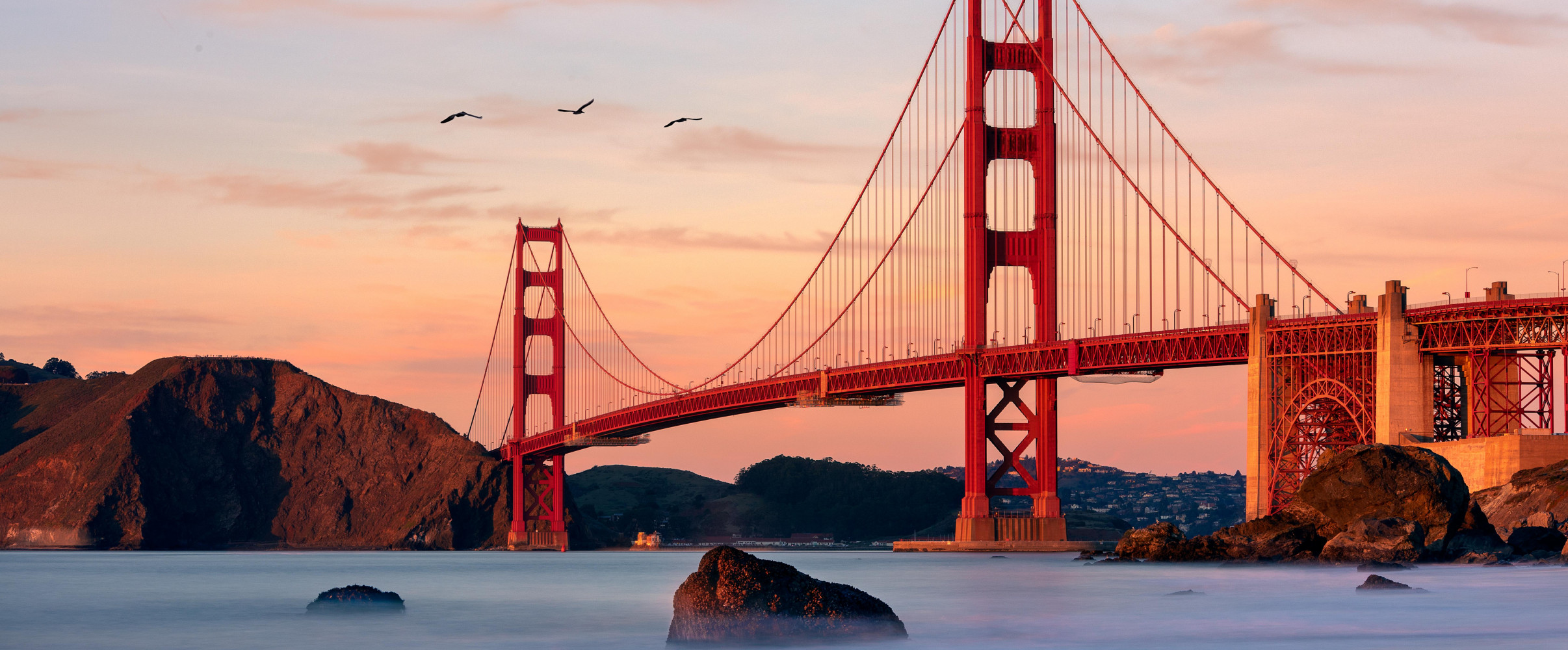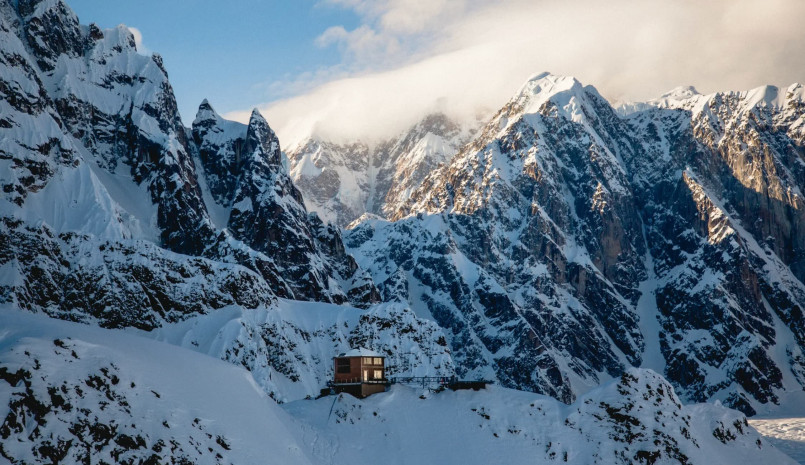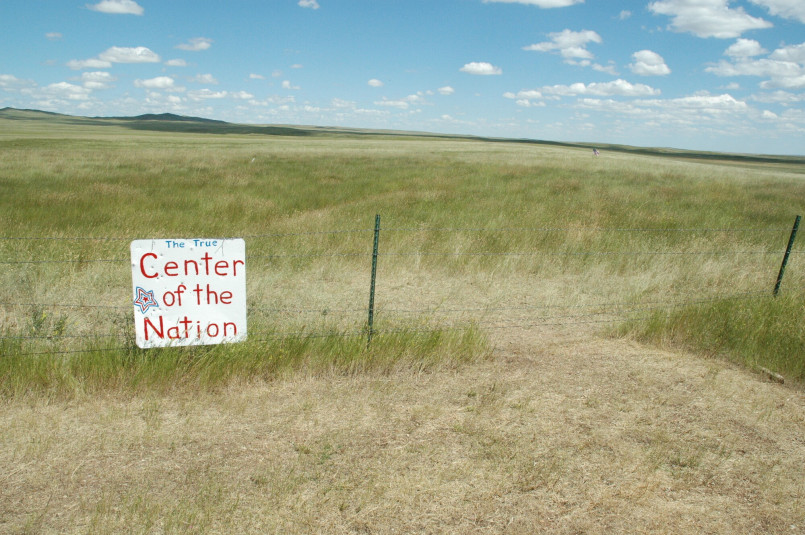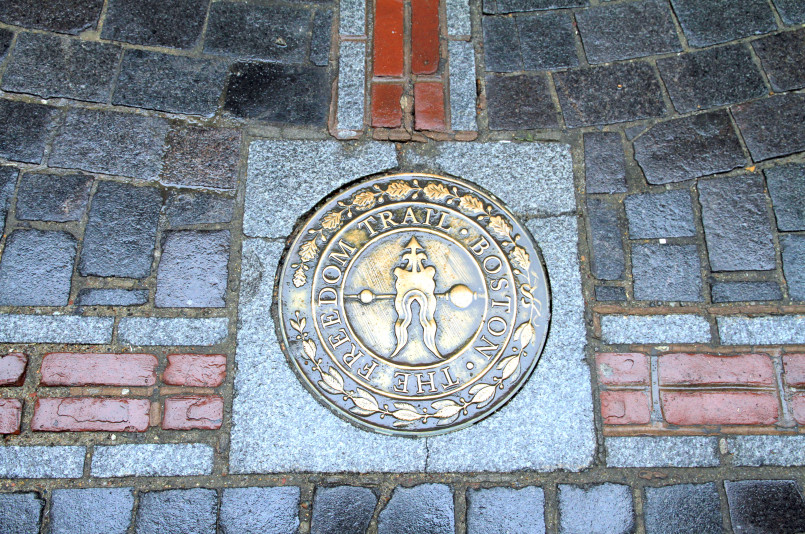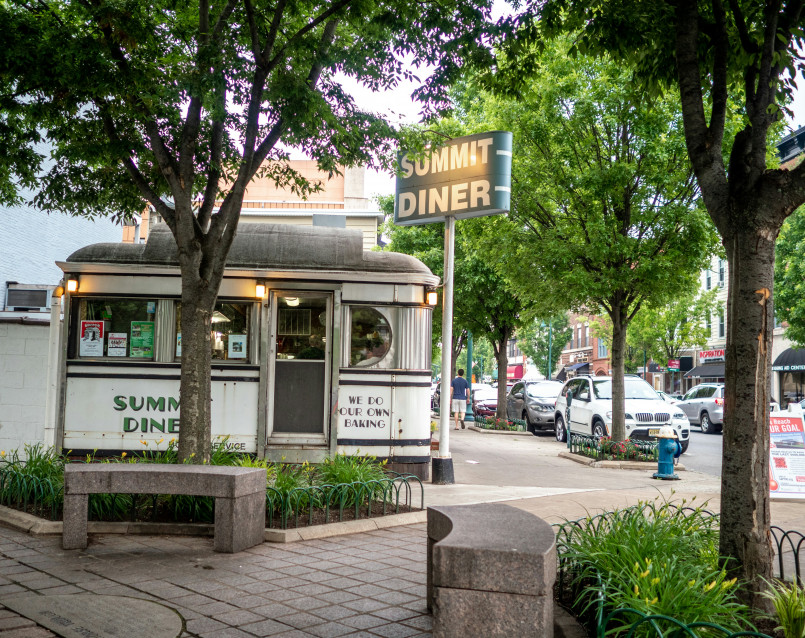From coast to coast, America boasts landmarks that captivate photographers and tourists alike. These iconic structures and natural wonders have become symbols of American identity, drawing millions of visitors annually who aim to capture their perfect shot.
America's landscape is dotted with iconic structures and natural wonders that have become synonymous with the nation itself. These photogenic landmarks draw millions of visitors each year, all hoping to capture that perfect shot for their social media feeds or personal photo collections. From engineering marvels to stunning geological formations, these destinations represent some of the most photographed locations in the United States.
What makes these landmarks particularly special is not just their visual appeal but also their cultural significance and the stories they tell about American history, innovation, and natural beauty. Whether bathed in golden hour light or illuminated at night, these sites offer endless photographic possibilities.
Golden Gate Bridge
The Golden Gate Bridge in San Francisco stands as perhaps the most photographed bridge in the world. Its distinctive International Orange color was specifically chosen to complement the natural surroundings while maintaining visibility in fog. Completed in 1937, the bridge spans 1.7 miles across the Golden Gate Strait.
Photographers flock to various vantage points including Baker Beach, Battery Spencer, and Fort Point to capture this engineering marvel against dramatic backdrops. The bridge is particularly photogenic at sunrise and sunset when fog rolls through the bay, creating ethereal scenes that have become iconic representations of San Francisco.

Statue of Liberty
Standing tall in New York Harbor, the Statue of Liberty has welcomed visitors to America since 1886. This copper colossus, designed by Frédéric Auguste Bartholdi, represents freedom and democracy and remains one of the most recognizable symbols of the United States worldwide.
The best photographs often come from Liberty State Park in New Jersey, Battery Park in Manhattan, or from boats circling the harbor. The statue's torch, crown, and stoic expression make it an irresistible subject for photographers trying to capture the essence of American ideals.
Grand Canyon
The Grand Canyon offers an almost overwhelming scale that challenges photographers to capture its immensity. Carved by the Colorado River over millions of years, this natural wonder stretches 277 miles long, up to 18 miles wide, and reaches depths of over a mile.
The South Rim attracts the majority of visitors and photographers, with Mather Point and Yavapai Point offering spectacular vistas. The changing light throughout the day creates dramatically different scenes, with sunrise and sunset producing the most dramatic lighting conditions as the canyon walls glow in rich reds, oranges, and purples.

Times Square
The beating heart of New York City, Times Square dazzles with its massive digital billboards, bright lights, and constant energy. This intersection in Midtown Manhattan has become synonymous with the city's vibrant character and never-sleep reputation.
Photographers are drawn to the sensory overload of colors, movement, and urban energy. Night photography is particularly popular, with long exposure shots capturing the streaking lights of passing vehicles against the illuminated backdrop of advertisements and Broadway marquees.
Brooklyn Bridge
The Brooklyn Bridge, completed in 1883, was a marvel of engineering in its day and remains an iconic part of the New York City skyline. This Gothic-inspired suspension bridge connects Manhattan and Brooklyn across the East River.
Photographers find countless creative angles, from the pedestrian walkway with its distinctive arches to DUMBO's Washington Street, where the bridge frames the Manhattan Bridge in the distance. Sunset and blue hour create magical conditions as the bridge's lights come on and the city skyline glows in the background.
Mount Rushmore
Carved into the Black Hills of South Dakota, Mount Rushmore National Memorial features the 60-foot faces of Presidents Washington, Jefferson, Roosevelt, and Lincoln. This monumental sculpture, completed in 1941, attracts photographers fascinated by both its artistic achievement and symbolic significance.
The most dramatic photographs often come during the golden hour before sunset when the faces are bathed in warm light, or during special evening illuminations. The Presidential Trail offers various angles and perspectives of this patriotic landmark.

Empire State Building
The Empire State Building has defined the Manhattan skyline since its completion in 1931. This Art Deco masterpiece stands 1,454 feet tall (including its antenna) and offers photographers both an iconic subject and an exceptional vantage point.
While many photographers capture the building from street level or from Top of the Rock, others ascend to the observation decks on the 86th and 102nd floors to photograph panoramic views of New York City. The building's lighting scheme, which changes to commemorate holidays and special events, adds another dimension to nighttime photography.
Niagara Falls
The thundering waters of Niagara Falls create one of North America's most awe-inspiring natural spectacles. Straddling the border between New York and Ontario, Canada, the falls comprise three distinct cascades: the American Falls, Bridal Veil Falls, and Horseshoe Falls.
Photographers capture the raw power of 3,160 tons of water flowing over the falls every second. The Maid of the Mist boat tour allows for dramatic up-close shots surrounded by mist, while Prospect Point and Goat Island provide excellent vantage points. Winter photographers seek out the rare partially frozen falls, creating otherworldly ice formations.
Las Vegas Strip
The Las Vegas Strip presents a photographer's playground of lights, architecture, and spectacle. This 4.2-mile stretch of Las Vegas Boulevard features replicas of world landmarks, elaborate hotel facades, and dazzling light displays.
Night photography dominates, with the neon glow creating a surreal atmosphere. Popular photographic subjects include the Bellagio fountains, the Eiffel Tower at Paris Las Vegas, and panoramic views from the High Roller observation wheel or Stratosphere Tower.
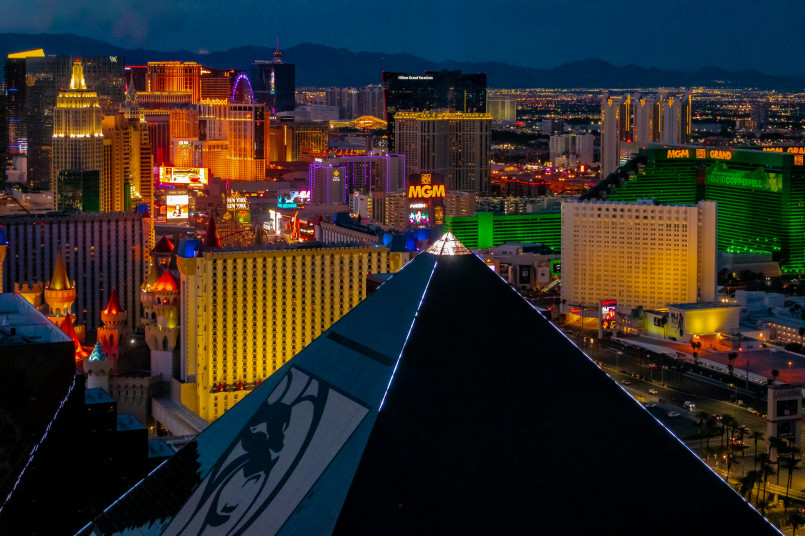
Hollywood Sign
Perched on Mount Lee in the Hollywood Hills, the Hollywood Sign has represented the entertainment industry and California dreams since 1923. The 45-foot-tall white letters have become globally recognized as a symbol of American cinema.
Photographers capture this iconic landmark from various locations including Griffith Observatory, Lake Hollywood Park, and the Hollywood Reservoir. The sign itself is fenced off, but hiking trails in Griffith Park offer excellent vantage points for those willing to make the trek.
Space Needle
Seattle's Space Needle has defined the city's skyline since its construction for the 1962 World's Fair. Standing 605 feet tall, this futuristic tower represents mid-century optimism and innovation.
The most popular photographs capture the Space Needle with Mount Rainier in the background or reflected in the waters of Elliott Bay. Kerry Park offers perhaps the most famous vantage point, while the recently renovated observation deck with its rotating glass floor provides unique perspectives for those shooting from the structure itself.
Yosemite Valley
The breathtaking Yosemite Valley has inspired photographers since Ansel Adams captured its dramatic landscapes in the early 20th century. This glacially carved valley in California's Sierra Nevada mountains features iconic formations like Half Dome and El Capitan rising dramatically from the valley floor.
Tunnel View provides the classic postcard vista of Yosemite Valley, while Glacier Point offers bird's-eye views. Photographers time their visits for seasonal spectacles like the February "Firefall" when Horsetail Fall glows orange at sunset, or spring when waterfalls reach peak flow from snowmelt.
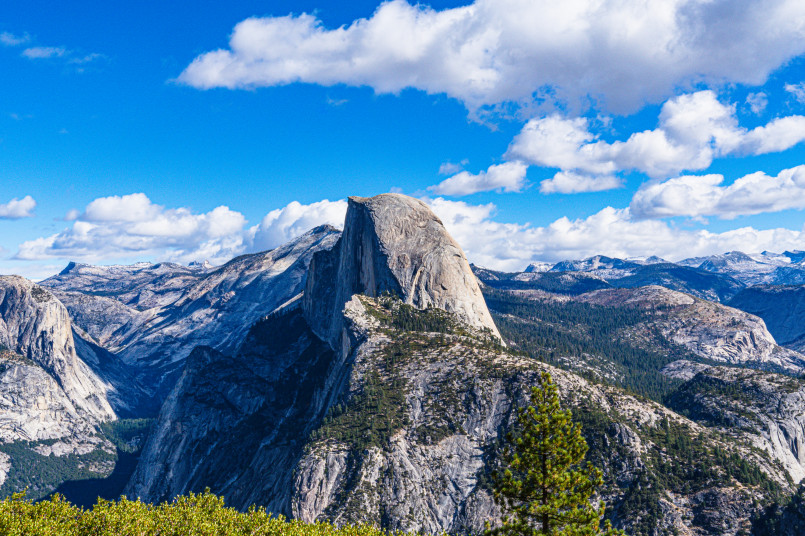
Lincoln Memorial
The Lincoln Memorial stands at the western end of the National Mall in Washington, D.C., honoring America's 16th president. The Greek temple-inspired structure houses a 19-foot marble statue of Abraham Lincoln and has been the backdrop for pivotal moments in American history.
Photographers capture both the imposing exterior with its 36 columns and the contemplative figure of Lincoln inside. The memorial is particularly photogenic at dawn and dusk, when fewer visitors are present and the warm light creates dramatic shadows. Reflections in the memorial's reflecting pool add another dimension to compositions.
Old Faithful
Perhaps the world's most famous geyser, Old Faithful in Yellowstone National Park erupts approximately every 90 minutes, shooting water up to 185 feet into the air. This predictable natural phenomenon draws photographers hoping to capture the perfect moment of eruption.
The most dramatic images often incorporate the billowing steam backlit by sunrise or sunset. Winter photography presents Old Faithful in a different light, with steam dramatically contrasting against snow-covered surroundings and creating ice formations on nearby trees.
Cloud Gate (The Bean)
Chicago's Cloud Gate sculpture, commonly known as "The Bean," has become one of America's most photographed modern landmarks since its installation in 2006. This massive stainless steel structure in Millennium Park measures 66 feet long by 33 feet high and weighs 110 tons.
The seamless, highly polished surface creates distorted reflections of the Chicago skyline and visitors, making it an irresistible subject for photographers. Close-up abstract shots of the curved surface contrast with wide-angle views capturing the entire sculpture against the city backdrop.

Frequently Asked Questions About 15 Most Photographed Landmarks in America: Iconic Destinations Revealed
What is the best time of day to photograph most landmarks?
The 'golden hour' (roughly one hour after sunrise and one hour before sunset) typically provides the most flattering light for landmark photography. During these times, the warm, directional light creates depth and dimension while reducing harsh shadows. For urban landmarks like the Empire State Building or Las Vegas Strip, the 'blue hour' just after sunset offers a magical combination of ambient blue sky with illuminated structures.
Are there any photography restrictions at these famous landmarks?
Most landmarks allow personal photography, but many have restrictions on tripods, commercial photography, or drone usage. The Statue of Liberty prohibits tripods inside the monument, while the Las Vegas Strip has restrictions on professional equipment without permits. National Parks generally allow photography but require permits for commercial shoots. Always check official websites before visiting with professional equipment.
Which American landmark is most photographed according to social media?
Based on Instagram hashtags and geotags, Disney's Magic Kingdom is technically the most photographed location in America. Among traditional landmarks, the Golden Gate Bridge, Times Square, and Grand Canyon consistently rank among the top. The Golden Gate Bridge is often considered the most photographed bridge in the world, appearing in countless movies, advertisements, and personal photos.
When is the best season to photograph Yosemite Valley?
Each season offers unique photographic opportunities in Yosemite. Spring (April-June) features peak waterfall flow and wildflowers. Summer offers clear access to high country. Fall brings golden colors to the valley floor. Winter creates dramatic scenes with snow-dusted cliffs and fewer crowds. The famous 'Firefall' effect on Horsetail Fall happens in late February if conditions align perfectly, drawing photographers from around the world.
How can I avoid crowds when photographing popular landmarks?
Visit during early morning hours (before 8 AM) when most tourists are still asleep. Alternatively, try weekday visits during shoulder seasons (April-May or September-October). For urban landmarks, try nighttime photography after tourist hours. Research alternative viewpoints away from main visitor areas. For example, photograph the Golden Gate Bridge from Baker Beach instead of Vista Point, or capture the Hollywood Sign from Lake Hollywood Park rather than the Observatory.
